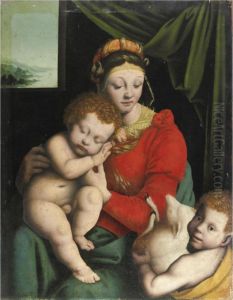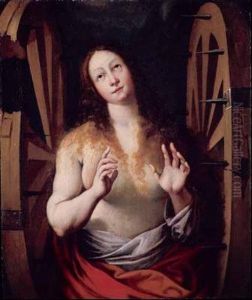Cerva Giovanni Battista Della Paintings
Giovanni Battista Della Cerva, also known as Giambattista Della Cerva, is an Italian painter whose life details are somewhat obscure, primarily because of the lack of extensive documentation. He was active during the 16th century, in the milieu of the High Renaissance, a period characterized by significant developments in art, architecture, and scholarship.
Della Cerva is often associated with the city of Milan, where he is believed to have spent a substantial part of his career. His style suggests that he was influenced by the works of Leonardo da Vinci and his Milanese followers. This is particularly evident in the soft modeling of figures, the delicate treatment of light and shadow known as chiaroscuro, and the complex compositions that he employed in his paintings.
Unfortunately, specific details about Della Cerva's training, early life, and exact birth and death dates remain unknown. He is sometimes confused with or thought to be related to other artists with similar names active during the same period, which further complicates the task of constructing a precise biography.
Despite the scarcity of personal details, some works are attributed to him, which allows art historians to piece together a sense of his artistic contributions. His oeuvre includes religious subjects that were common during the Renaissance, and his paintings can be found in various Italian churches and collections. These works are characterized by their refined execution and often exhibit the artistic ideals of the High Renaissance, such as balanced composition, a sense of harmony, and a focus on the beauty of the human form.
Overall, Giovanni Battista Della Cerva's biography is an example of how many artists of the past, despite their talents and contributions to the art world, can sometimes fade into the background of history due to the lack of surviving records. Art historians continue to study his works and those of his contemporaries to gain a deeper understanding of the period and its artistic legacy.

